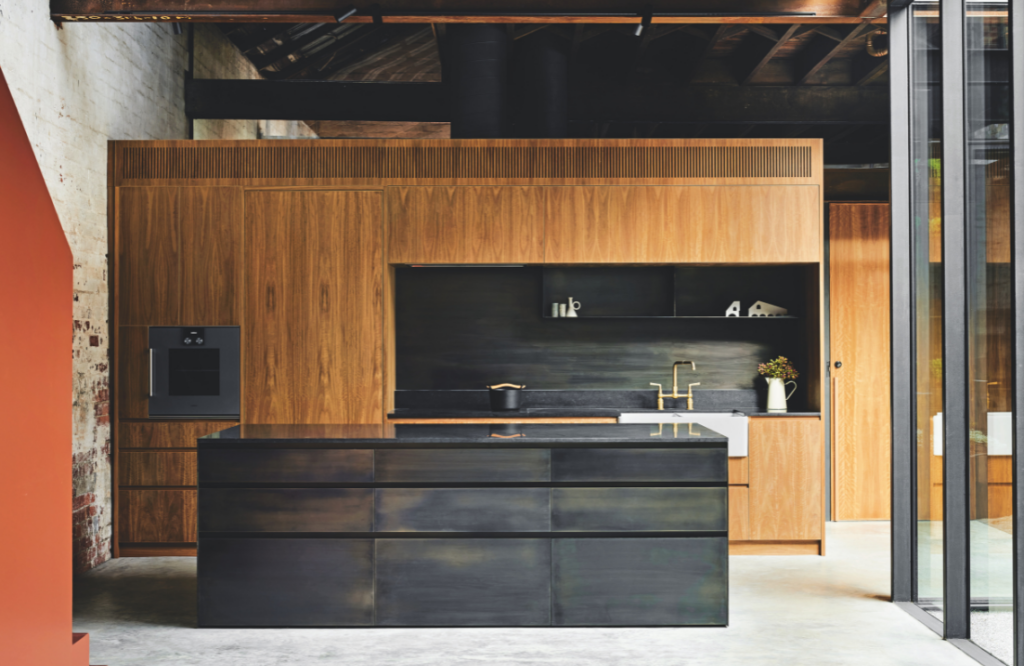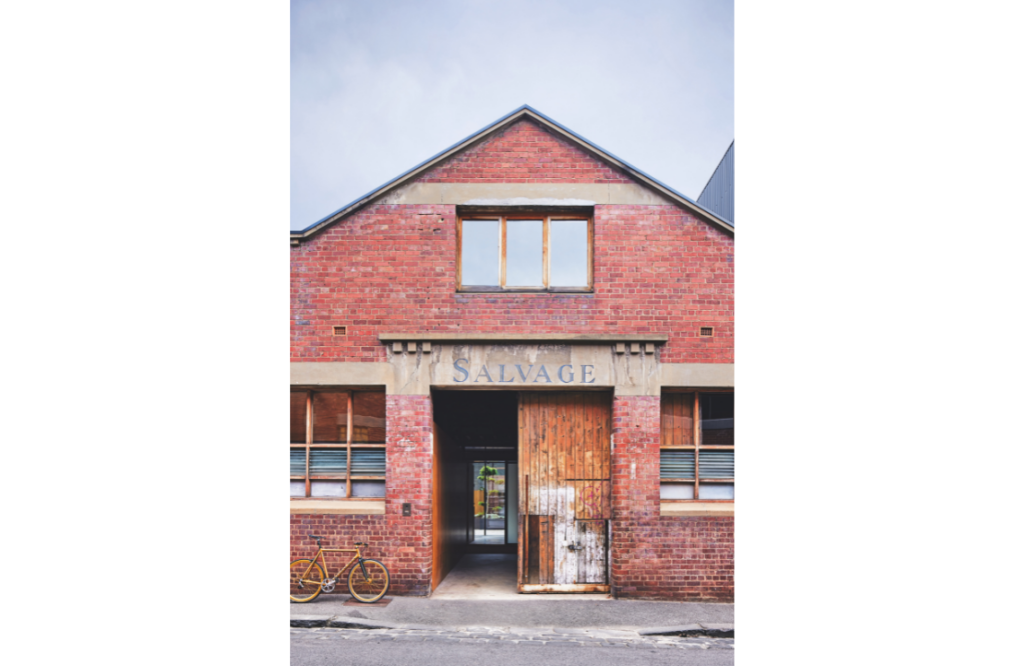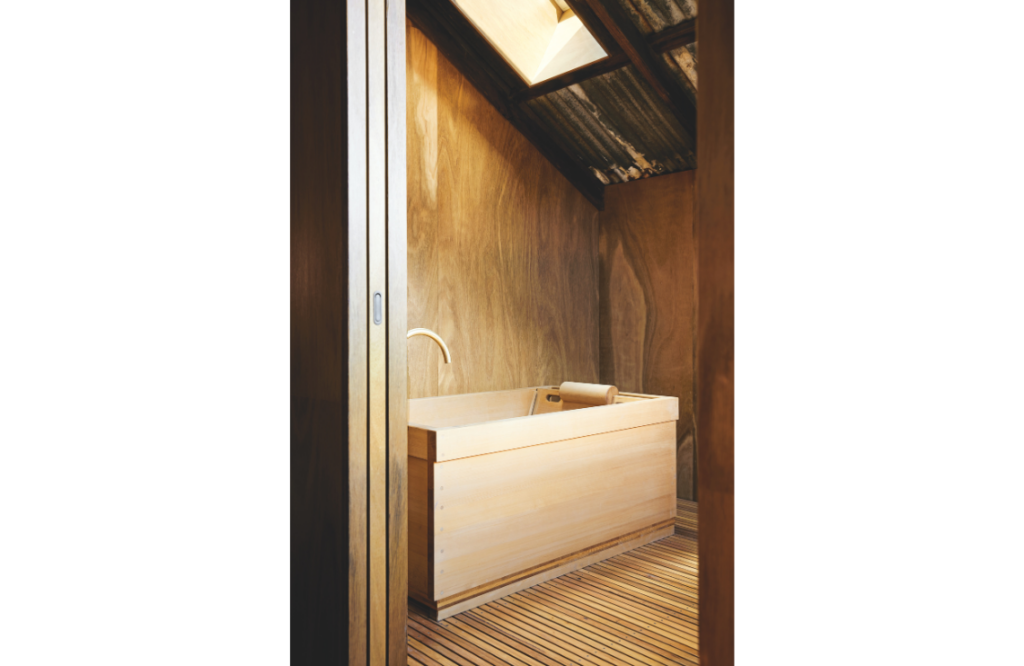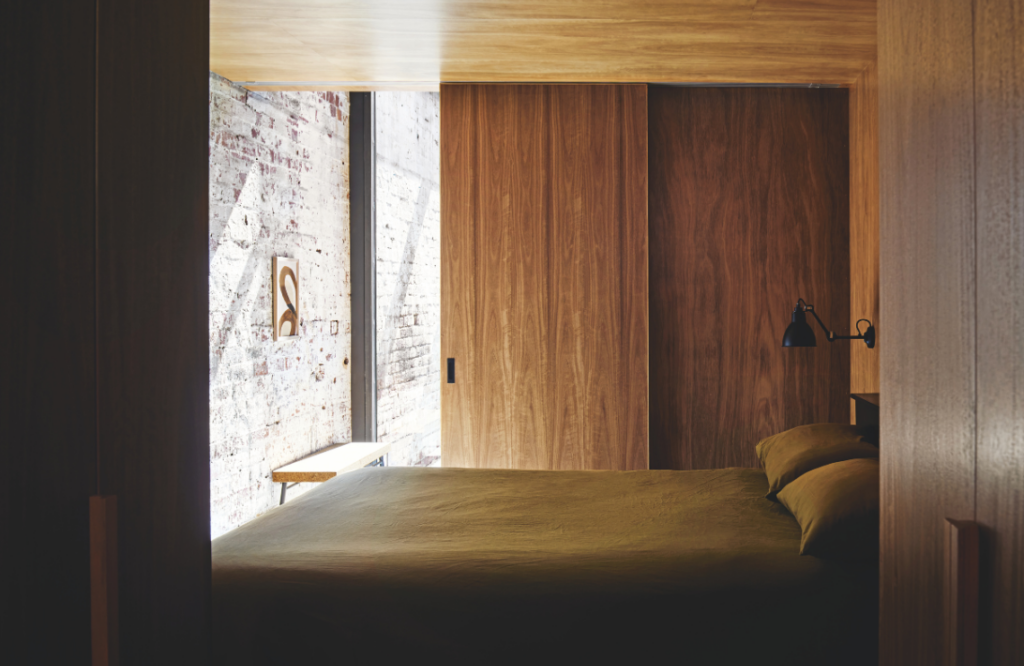This unique historic warehouse home steeped in history retains its rich past. Its walls retain hallowed resonances of the past, but with touches of innovation and modern amenity, it’s a poignant mix of old and new. The undisturbed façade hides the modern renovation. Australian architect Harry A. Norris originally built the house as a warehouse. He was known for designing Melbourne’s Nicholas Building and other Art Deco buildings. Clare Cousins from Clare Cousins Architects says the design challenge was indeed a paradox of epic proportions: “To introduce the obligatory domestic program while preserving the warehouse scale of the interior and memories of its past,” she says. Honouring the past, and preserving its beauty with buildings like this, serves to add vigour and life to the present. This story really began more than a century ago, in the roaring ’20s when motor vehicles were becoming more commonplace, department stores opened, and trams were ferrying locals around. Industry was on the rise, and growing commercial industries needed brick warehouses to support them.

A Modern Kitchen with a Warehouse Edge
This iconic building has had many incarnations since its inception, including a stable, ironworks, salvage warehouse, and more recently a dressmaking atelier. And now it’s a home. The current owners, who lived in New South Wales, had acquired the building 25 years ago. They wanted to transform it from a commercial endeavour into their own private dwelling when they retired. However, there was a caveat. They wanted to retain the sense of history and the overall aesthetic and charm of the original building. As a result, Clare says they only made changes to the façade when the structural integrity of the building required it.
Honouring the Past While Creating Comfort
The interiors of the historic warehouse home are austere yet earnest, offering a rich slice of history. Warm timber and earthy brick add to its charm, while the colour palette features neutral tones, blacks, and brown hues, creating a restrained and harmonious atmosphere. Additionally, tiles in the bathrooms capture the light and add a shimmer, and a large oval mirror serves to reflect light around the space. A large metal bookcase along one wall stretches upward, further enhancing the aesthetic.

The kitchen boasts clean lines, with its beauty found in its simplicity and functionality. Moreover, a dining space tucked into an area near the courtyard captures both the light and the outlook. The bedrooms, comfortable and pared back, feature blackbutt-clad rooms that add warmth to the interior spaces. Clare notes that the rust-hued steel stair goes beyond its utility. “It playfully engages with existing structural timbers, providing opportunities for elevated vantage points and dividing the expansive living space into more intimate zones,” she explains.

The warehouse has double-height perimeter walls and there’s an original feed loft cutting through the airspace. Removing a portion of the roof and adding a central courtyard allowed more natural light to stream through. The design retained the aged timbers and corrugated roofing to honour the building’s origins. The design retained the aged timbers and corrugated roofing to honor its origins.
A Courtyard to Bring the Outside In
In the central courtyard, there’s a splash of green from a solitary tree that reaches skyward. The natural light punches through to the home’s interior and ample ventilation offers comfort and liveability.
Given that the building is a century old, upgrades to thermal comfort were on the agenda. These included subfloor insulation, double glazing, cross ventilation and operable skylights. Clare says the galvanised roof was retained as the ceiling, with a roof structure above it. “Corrosion holes and 100 years of ad hoc repairs will remain as found, creating a patchwork of patina,” explains Clare.

A Seamless Blend of Past and Present
The spaces are easy to negotiate and they flow with ease, offering privacy and opportunities to engage with others. To honour the ironworks that were located there, industrially scaled steel windows, the bookshelf and stairs were constructed on site. Clare says the stairs offer a link from past to present. “The rust tones of the stairs rhyme with the patina of the rugged surrounding surface but the stairs are clearly expressed as a new element within the interior,” she explains.
The owners of the historic warehouse home are delighted with their new abode. “The design provides a discreet, modern and comfortable urban refuge from the bustle of city life, offering a sense of escape, privacy and calm around a courtyard garden — which is a token of the natural world,” they reflect.






















